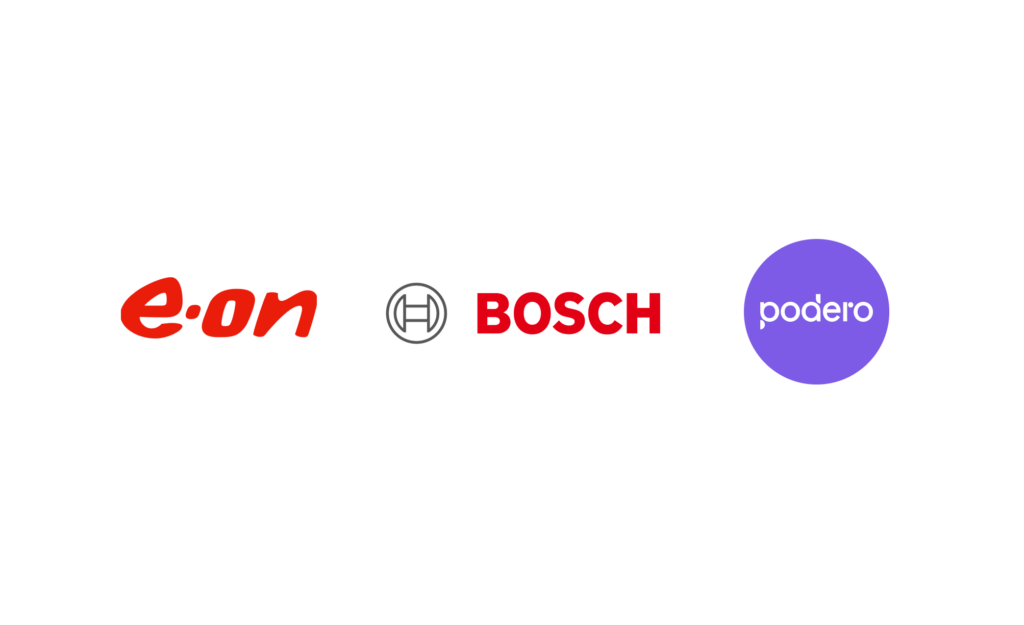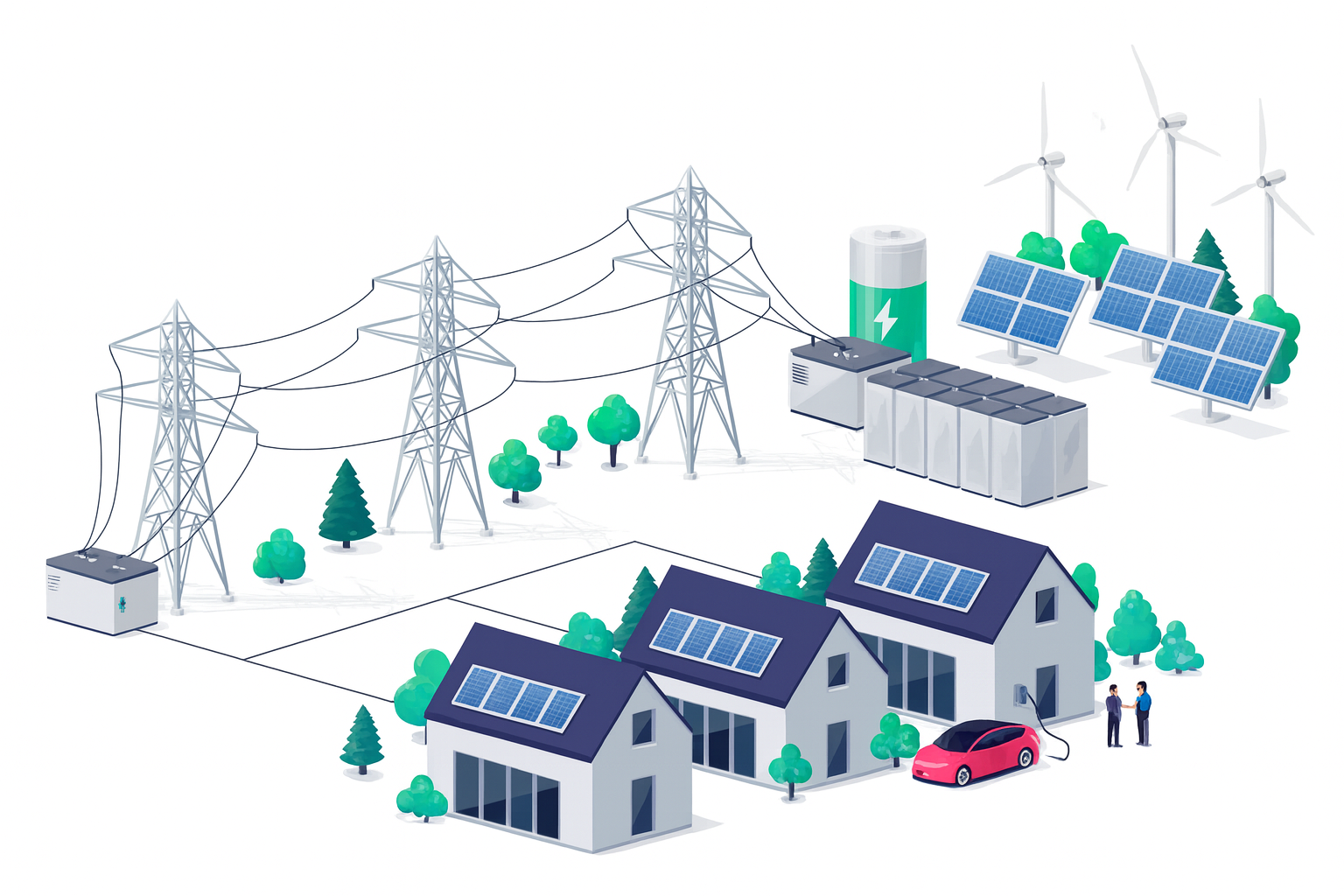The energy market’s tipping point.
The European energy retail market is at a tipping point. The shift from traditional to smart energy models is accelerating fast.
Analysts at LCP Delta report that while the smart energy customer base sits at just 6% today, it’s set to grow by more than 25% annually between 2024 and 2030. This isn’t a slow-moving trend. It’s a fundamental change in what customers expect.
That speed creates an urgent threat for incumbent suppliers: rising customer acquisition costs (CAC) for anyone still operating with a rigid, limited product portfolio. Marketing teams are under immense pressure to deliver high-quality leads, yet they face a barrier they can’t overcome.
You can have the most brilliant campaign in the world—but if your price points and portfolio block the path, you’re paying to send potential customers to a dead end. The result? A leaky funnel, wasted ad spend, and CAC that keeps climbing.
We believe in treating your tariff portfolio not as a billing function, but as a core part of your acquisition engine.
What a smart tariff portfolio really means.
“Smart” is one of the most overused words in energy. Here, it means something specific: a smart portfolio—a collection of tariffs, some flexible, some fixed, all designed with intent. Each tariff aligns to a distinct customer persona, with its own risk tolerance, sophistication level, and consumption pattern.
Future acquisition success won’t come from simply adding a dynamic spot-price tariff to a 24-hour fixed contract. According to LCP Delta’s analysis of 600 European tariffs, only 17% are dynamic. Risk-averse consumers aren’t eager to expose themselves to volatile pricing.
The real innovation lies in portfolio diversity and proposition design.
Leading retailers like Octopus Energy in the UK have built at least nine distinct tariffs, with over one in seven customers choosing the more sophisticated options. Their model proves that tailoring works. Importantly, they back it with smart acquisition tools—interactive quizzes and compatibility matrices that guide customers to the right tariff for their needs.
What a smart portfolio includes.
A truly smart tariff portfolio blends creativity with practicality. It might include:
- Time-of-use tariffs. Static time zones with different price periods throughout the day – ideal for families who can shift usage off-peak without real-time monitoring.
- Smart device tariffs. Tailored to high-consumption assets like EVs or heat pumps. These speak directly to the customer’s main pain point. Some even offer “smart steering” – automating consumption to match market pricing and user preferences.
- Prosumer tariffs. For households with solar panels or batteries who both produce and consume energy. They want engagement, not generic plans.
- Hybrid risk-sharing models. Combining fixed and variable elements – or price caps – to balance volatility with predictability.
- Expert-targeted tariffs. Like Agile Octopus, which offers surge protection and even pays customers during negative pricing events, appealing to tech-savvy adopters.
The goal? To design tariffs that speak directly to each high-value segment, creating real choice and real pull.
The flaw of the limited-choice funnel.
A rigid pricing model with only one or two options forces marketing teams to target a narrow slice of the market—or accept massive wastage.
Think about who gets excluded:
- The new EV driver, searching for a charging-specific plan but seeing only standard rates
- The solar prosumer, seeking to monetize their production
- The budget-conscious family, seeking predictable bills and manageable savings
Each arrives with intent—and leaves without a fit. Every lost conversion represents wasted spend: search ads, content, and nurturing efforts. It also puts an unfair burden on marketing to find the “perfect-fit” few, driving CAC up for every qualified lead.
From funnel filter to customer magnet.
A diverse, purposeful tariff portfolio turns your pricing page from a filter into a magnet.
By offering multiple customer entry points, you empower your marketing team to cast a wider net—without increasing per-lead costs.
This is about product-market fit: aligning value with cost across segments and meeting customers where they are, in both household needs and risk tolerance.
How a smart portfolio cuts CAC.
1. Boosts conversion at every stage
When a prospect lands on your pricing page and finds a plan that matches their needs, friction disappears. Personalized offers convert far better than generic ones.
An EV-specific tariff or a static time-of-use option with clear savings can turn more leads into paying customers—without increasing top-of-funnel spend.
2. Enables hyper-targeted campaigns
This is where acquisition efficiency multiplies.
Instead of running another “save money on energy” campaign that blends into the market noise, you can build segment-specific messages around concrete propositions.
With today’s AI tools, it’s fast and affordable to create multiple marketing assets under one brand identity—each appealing to a different energy user.
These campaigns convert at materially higher rates because they don’t sell a service. They solve a specific problem, with a fit-for-purpose product.
E.ON Next’s Next Drive Smart promises EV charging at just 6.5p per kWh off-peak. Octopus Energy’s Intelligent Octopus Go offers six hours of cheap home electricity for smart EV charging. Both answer the same simple question every EV owner has: “how do I charge cheaply at home?”
Similarly, oekostrom’s Wann ist Öko? (“When is it eco?”) campaign promoted its Podero-enabled smartSparen bolt-on, which automatically shifts consumption to cheaper, greener hours. While aimed at connected device users, it also boosted brand engagement among broader audiences—signaling to them that “if oekostrom offers smart tariffs like this, they’ll probably have what I’m looking for too.”
3. Unlocks organic, low-cost growth
When a customer signs up for a plan that fits perfectly, they feel understood from day one. That sense of fit drives satisfaction, referrals, and retention.
Data backs it up: Deloitte and Forrester research shows referral marketing—rooted in product-market fit—can reduce acquisition costs by 24–35%. The compounding effect of advocacy is the ultimate CAC reducer.
Closing the strategy-to-execution gap.
A smart portfolio is a winning strategy on paper—but for most suppliers, execution is the obstacle.
The issue isn’t vision. It’s infrastructure.
To take one example, device-specific tariffs demand integrations with multiple OEMs, alongside trading integration for monetization to really scale. Smart tariffs also rely on accurate, flexible billing systems—all without disrupting CRM cores.
That’s where a modern tariff tech stack becomes the enabler. As LCP Delta notes, “integration and automation are key to delivering value.”
To make a smart portfolio profitable, systems in the stack must handle three challenges:
- Device integration. Connect seamlessly with customers’ home assets.
- Market monetization. Turn flexibility into revenue through trading.
- Scalable operations. Bill accurately and integrate with ERP systems.
Podero was built to close this gap. Our cloud-based platform unites these capabilities through three functions:
Steer. Cloud-to-cloud integration with 50+ device brands and 1,500+ models.
Trade. Trading system integration to optimize flexibility revenue.
Scale. Deep connections to billing and CRM systems for complex tariff operations.
Turning aspiration and intent into market reality.
Your next move.
The future of energy is tailored. Retailers like Octopus are already leading with multi-tariff portfolios designed around customer choice and control.
A diversified tariff strategy, powered by the right tech stack, isn’t a “nice-to-have.” It’s the foundation of sustainable, efficient growth.
A rigid product offering will undermine even the most brilliant marketing. Now’s the time to align your platform, pricing, and message—and build an acquisition engine that converts.
There’s effort involved in broadening your portfolio and upgrading systems. But the ROI is clear—and waiting for utilities ready to commit.For a deeper look at why dynamic contracts aren’t for everyone – but device flex is – read our short report, Fixed in their Ways?












